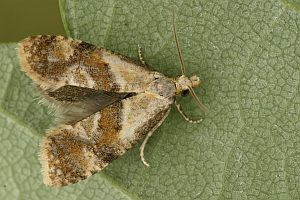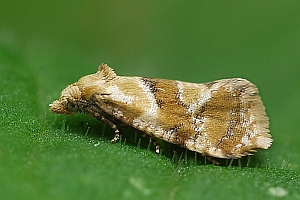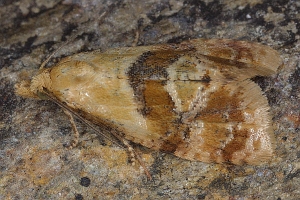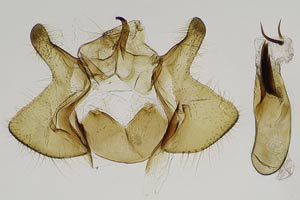Version 50 (neueste) vom 16. Juni 2024 um 17:12:44 von Michel Kettner
Länder:

 +33Kontinente:EUAS
+33Kontinente:EUAS


 +33Kontinente:EUAS
+33Kontinente:EUAS
Falter

Raupe, Hibernaculum

Befalls-Spur

Weibchen
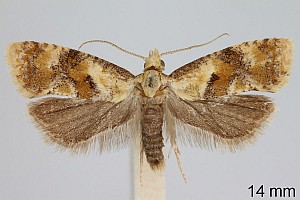
Geschlecht nicht bestimmt

Männchen

Weibchen

Erstbeschreibung
Inhalt
1. Lebendfotos
1.1. Falter
1-2: Österreich, Salzkammergut, Bad Mitterndorf, Zauchen, Tongrube, 780 m, 27. Juni 2012 (det. & fot.: Pia Wesenberg), conf. Oliver RistForum
3: Deutschland, Baden-Württemberg, Gaggenau, 18. Juni 2006 am Licht (Foto: Dietmar Laux), det. Helmut KolbeckForum
4: Österreich, Niederösterreich, 1 km NE Maiersdorf , Felsfluren, Gebüsch, Viehweiden, 620 m, 14. Juli 2005 (Foto: Peter Buchner), det. Peter Buchner
5: Deutschland, Baden-Württemberg, Söllingen (ehem. Munitionsdepot), 8. Juli 2007, Lichtfang (Studioaufnahme: Dietmar Laux), conf. Rolf MörtterForum
6: Deutschland, Bayern, Furth im Wald, Wildgarten am Rande eines Feuchtgebietes auf Schwertlilie, 14. Juli 2007 (Foto: Ingrid Altmann), det. Ingrid Altmann, conf. Buchner PeterForum
7: ♂, etwas abgeflogen, Deutschland, Thüringen, Umgebung von Maua bei Jena, ca. 300 m, Tagfund am 21. Juli 2009 (Foto: Heidrun Melzer), conf. Christian Kaiser
8: Österreich, Steiermark, Bad Mitterndorf, Salza-Stausee, 47°30.804 13°56.685, 780 m, 20. Juli 2010 (Foto: Manuela Semisch), det. Friedmar GrafForum
9: Schweiz, Wallis, Mattertal, Kalpetran, 950 m, 28. Mai 2012 (Foto: Simon Hänni), conf. Friedmar GrafForum
10: Österreich, Steiermark, Bad Mitterndorf, Salza-Stausee, 47°30.281'N 13°56.667'E, 780 m, Tagfund, 2. Juli 2012 (det. & fot.: Martin Semisch), conf. Alexandr ZhakovForum
11: Slowakei, Rožňavská kotlina (Rosenauer Kessel), Rožňava (Rosenau), ca. 310 m, 14. Juli 2011, Tagfund (det. & fot.: Andrej Makara), conf. Alexandr ZhakovForum
12-13: Deutschland, Nordrhein-Westfalen, Hilchenbach-Vormwald, 480 m, Tagfund, 1. Juli 2014 (det. & Freilandfotos Rainer Winchenbach), conf. Friedmar GrafForum
14-15: ♀, Österreich, Steiermark, Ponigl bei Weiz, Mähwiese in Forstgebiet, am Licht, ca. 850 m, 22. Juli 2019 (det. & fot.: Horst Pichler)Forum
16: ♀, Österreich, Steiermark, Ponigl bei Weiz, Forstweg, am Licht, ca. 850 m, 16. Juli 2019 (det. & Foto: Horst Pichler)Forum
1.2. Raupe, Hibernaculum
1-2: erwachsene Raupe in vertrocknetem Stängel von Wasserdost (Eupatorium cannabinum), Belgien, Lebbeke, 27. Dezember 2017 (det. & Fotos: Ruben Meert)
3-4: Raupen in Hibernaculum, in vertrocknetem Stängel von Wasserdost (Eupatorium cannabinum), Belgien, Lebbeke, 27. Dezember 2017 (det. & Fotos: Ruben Meert)
1.3. Befalls-Spur
2. Diagnose
2.1. Weibchen
1: ♀, Italien, Friuli Venezia Giulia, Castions di Strada, 14 m, 13. Mai 2015 (leg., det. & Foto: Helmut Deutsch)Forum
2: ♀, Daten siehe Etikett (coll., det. & fot.: Egbert Friedrich), conf. Uwe Büchner
2.2. Geschlecht nicht bestimmt
2.3. Genitalien
2.3.1. Männchen
1: ♂, Österreich, Wien, Lobau, Tagfund am 23. Juli 2011, leg. & det. Oliver Rist, GU Peter Buchner
2: ♂, Österreich, Steiermark, Ponigl bei Weiz, Forstweg, ca. 850 m, 14. Juni 2019, Tagfang (präp. & Foto: Horst Pichler), det. Tina Schulz am FalterfotoForum
3: ♂, Österreich, Steiermark, Ponigl bei Weiz, sonniger Forstweg, Tagfang, ca. 800 m, 15. Juli 2019 (det., präp. & Foto: Horst Pichler) [Falterfotos im Forum]
4: ♂, Österreich, Steiermark, Graz, St. Peter, ca. 380 m, Garten, Mischwaldrand, am Licht, 29. Juni 2020 (det., präp. & Foto: Horst Pichler) [Falterfotos im Forum]
2.3.2. Weibchen
1: ♀, Österreich, Steiermark, Ponigl bei Weiz, Mähwiese in Forstgebiet, am Licht, ca. 850 m, 16. Juli 2019 (det., präp. & fot.: Horst Pichler) [Falterfotos im Forum]
2: ♀, Österreich, Steiermark, Ponigl bei Weiz, Forstweg, am Licht, ca. 850 m, 16. Juli 2019 (det., präp. & Foto: Horst Pichler)Forum
2.4. Erstbeschreibung
1-4: Curtis (1834) [nach Copyright-freien Scans auf www.biodiversitylibrary.org]
3. Biologie
3.1. Nahrung der Raupe
- [Asteraceae:] Eupatorium cannabinum (Wasserdost)
Kennel (1913: 272) ließ verlauten: "Die Raupe ist schmutzig gelblichweiß, der Kopf braun, das Nackenschild gelblich. Sie lebt vom September bis Mai im Stengel von Eupatorium cannabinum, Chrysocoma linosyris, Lycopus europaeus".
Die Raupe dieser Art ist ganz an Wasserdost gebunden. Die Angaben zur Goldhaar-Aster und erst recht zum Wolfstrapp sind nahezu sicher falsch.
(Autor: Erwin Rennwald)
4. Weitere Informationen
4.1. Etymologie (Namenserklärung)
Curtis (1834) "The Chalk-cliff Tortrix". — Lateinisch rupes = Fels, Kliff; colere = bewohnen.
4.2. Andere Kombinationen
- Cochylis rupicola Curtis, 1834 [Originalkombination]
4.3. Synonyme
- Cochylis marginana Stephens, 1834
- Cochylis humidana Herrich-Schäffer, 1851
4.4. Literatur
- Erstbeschreibung: Curtis, J. (1823-1840): British Entomology; Being Illustrations and Descriptions of the Genera of Insects Found in Great Britain and Ireland: Containing Coloured Figures from Nature of the Most Rare and Beautiful Species, and in Many Instances of the Plants upon which they are Found. Vol VI. Lepidoptera, Part II. — [Not paginated]. London (E. Ellis & Co.).
- Kennel, J. (1908-1921): Die Palaearktischen Tortriciden. Eine monographische Darstellung. — Zoologica, 21 (54): 1-546. [PDF auf zobodat.at]



































